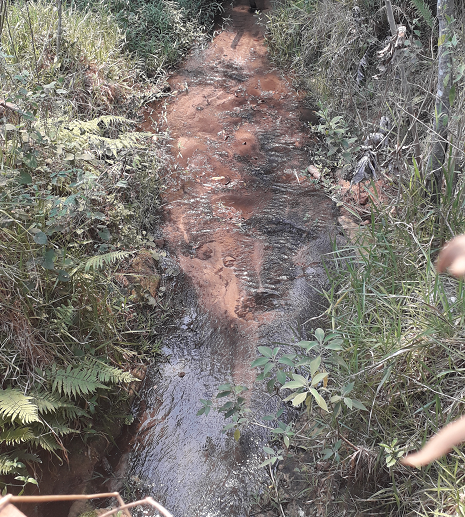Winter is always the dry season in Paraguay. However this year the winter has been far drier than normal. The annual drought has been much longer than that of previous years.
Winter in Paraguay runs with much variation from year to year from June to August. During that time a number of cold spells can be expected brought by southerly winds. Frosts are possible across many parts of the country during cold snaps.
The cold air never brings snow for it has lost all its moisture by the time it reaches Paraguay. Instead it is driven on by a cold dry wind.
Outside the cold spells rain is also less likely during winter. Much of the rain the rain that falls in Paraguay is as a result of humidity building up into electrical storms. The conditions are seldom right to generate these during the winter months.
The net result is that winters are almost always dry. Whilst in summer there may be a downpour every week in winter there may be a month or even six weeks between substantial downpours.
This year though the dry season has been far drier and far longer. It is about four months since the last heavy rains. This is three or even four times the average.
The lack of water has dried the land out.
Water has continued as it must flowing downhill from hill sides to steams to rivers. This has though not been replaced and so little by little, day by day there has been less water left in the system.
The large rivers that cross the land are current several metres below normal levels. All are at record lows and will continue to get lower as their waters flow southwards to the River Plate and into the Atlantic.
With much of the produce that arrives in Paraguay passing through the port of Asuncion this is already a concern. As the waters continue to become lower it will be more and more difficult for large ocean going cargo to reach Asuncion.
This could have a potentially damaging effect on the economy of the country. Reducing the flow along its major trade route.
The lowering of river levels is mirrored in the lowering of water tables. This effects everyone across the country.
The vast majority of the population of Paraguay receives their water from underground wells. Water percolating down through the ground rocks replaces that drawn up from wells and pumped along pipes.
However this year the water has not been replaced. The pumps are now across the country having to work to draw water from depths deeper than ever before. The system quite simply was not built to cope with such conditions.
Accordingly all across Paraguay households are having to go without running water for extended periods most days. The water companies feel they have no choice but to turn the pumps off. Firstly to preserve what remains. And secondly to avoid burning out motors far harder than they were designed to do.
Above ground all across the countryside the lack of water is visible. Rivers and streams have shrunk and waterfalls are following at much reduced volumes.
The land also lacks moisture. Thick clay soils are baked solid. Crops should be planted but the ground is like iron and there is no water to help seeds to grow.
The parched land is a risk of burning. The smallest fire soon grows to an inferno that races uncontrollably across the ground. Once started such a fire in these conditions is almost unstoppable until it runs out of fuel.
The roads are no better. In Paraguay almost every road that is not a main road is nothing more than a dirt track. These have all dried into sandy dust bowls. Great clouds of dust a blown along them by the wind and by passing vehicles. Houses where washing must be hung within a few metres of the road risk it acquiring a layer of dust long before it dries.
For people like myself travelling on motorbikes getting about can be a very sandy business. Any passing vehicle brings a mouth full of sand and a sudden loss of visibility. Or worse still the possibility of rounding a bend and finding yourself behind a lorry or a bus.
The rains will return and Paraguay will turn green once more. It will though take many days of rain to restore the waters to where they were before.
There after only time will tell if this year has been truly unusual or whether it is a sign of how climates are changing.


Recent Comments